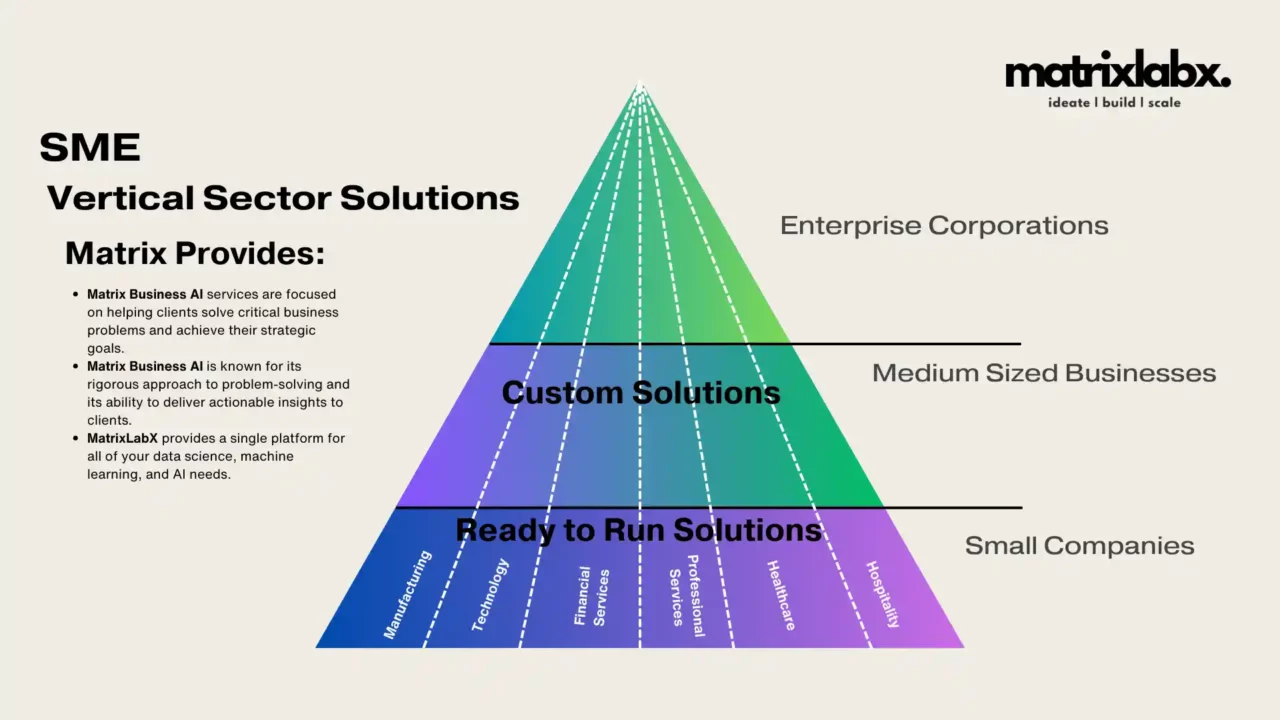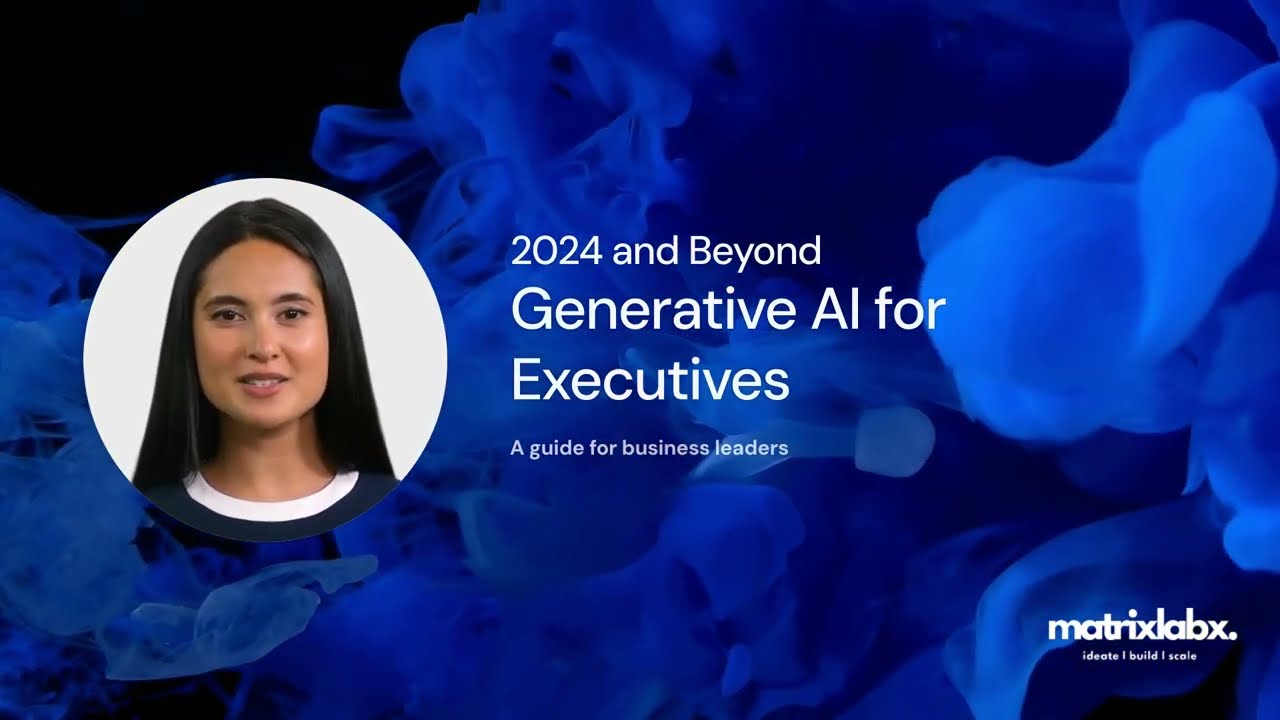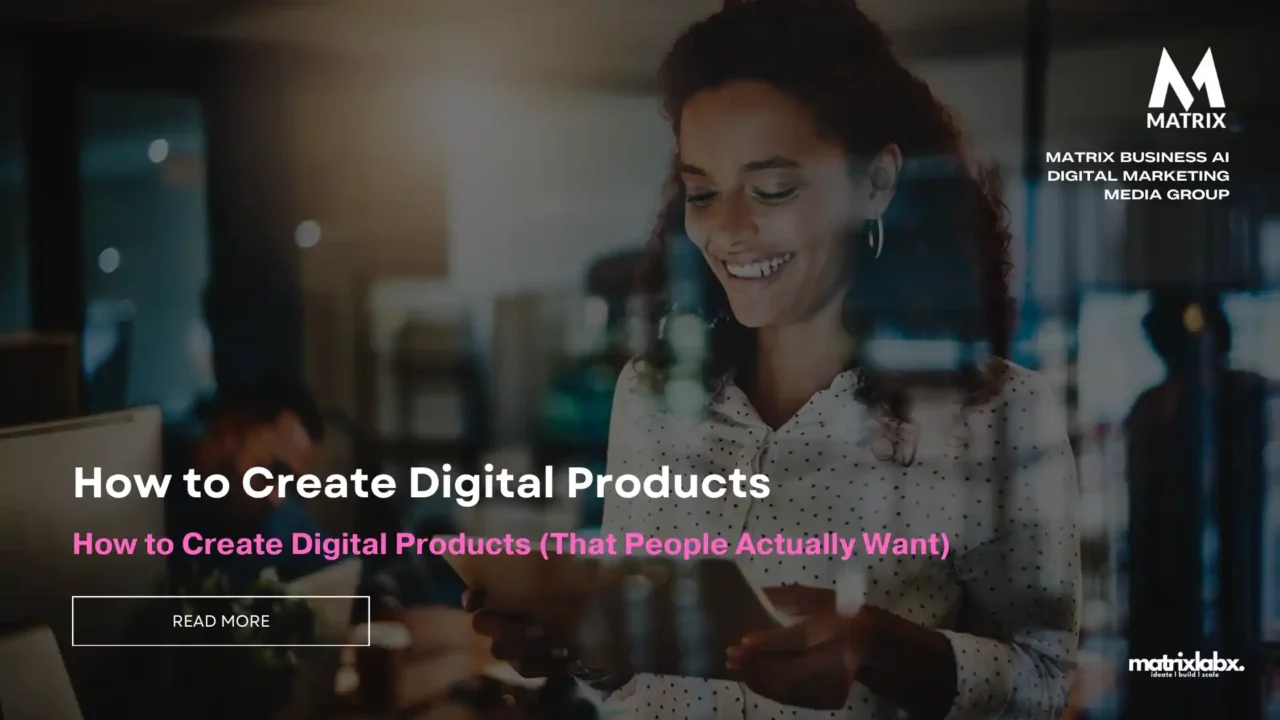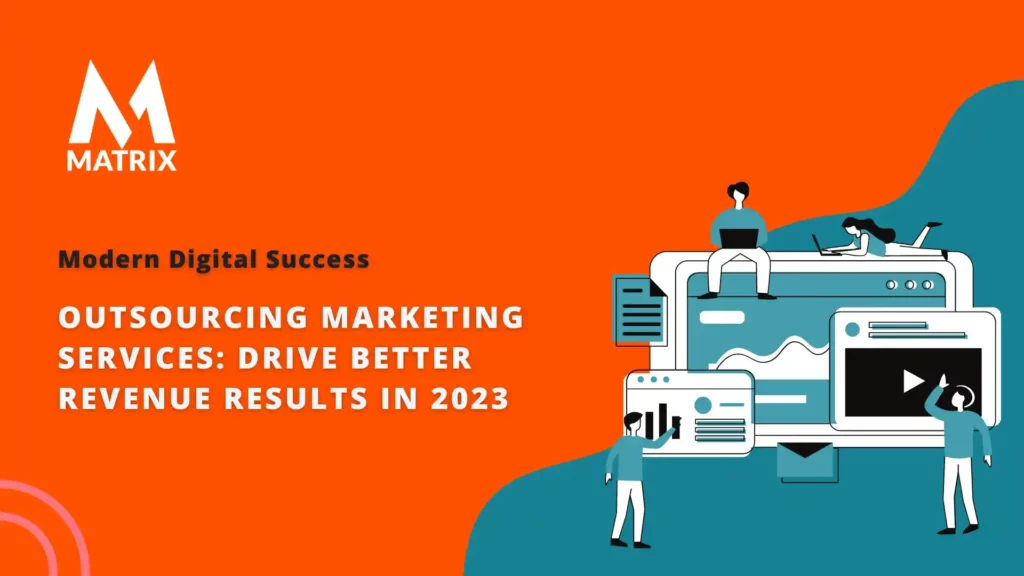How to Create Digital Products (That People Actually Want)
How to Create Digital Products (That People Actually Want)
What are digital products?
Digital products are intangible assets or media that can be sold and distributed repeatedly online without replenishing inventory. These products range from software, eBooks, and courses to music, art, and templates.
Digital products are intangible goods that exist in a digital format. They are typically delivered to customers electronically, such as through download, email, or streaming.
Digital products can be anything from e-books and software to online courses and virtual goods in video games.
Here are some examples of digital products:
- E-books
- Software
- Online courses
- Web-based applications
- Graphics and digital art
- Fonts
- Music and audio
- Photography
- Video
- Documents
- Spreadsheets
- Tickets
- Professional services
Benefits of Digital products:
Digital products offer several benefits over physical products, including:
- Convenience: Digital products can be purchased and downloaded instantly, making them convenient for customers and vendors.
- Scalability: Digital products can be scaled to reach a global audience without incurring shipping and inventory costs.
- Profitability: Digital products typically have high-profit margins, as there are no costs associated with manufacturing or shipping.
- Updatability: Digital products can be easily updated and improved without having to produce new physical copies.

Challenges of Digital products:
There are also some challenges associated with digital products, such as:
- Piracy: Digital products can be easily copied and distributed without permission, impacting sales and revenue.
- Security: Digital products can be vulnerable to hacking and other security threats, which can put customer data at risk.
- Customer support: Digital products can be more difficult than physical products, as customers may need help with installation, troubleshooting, and other issues.
Role of the product manager:
The product manager is responsible for overseeing the development, launch, and marketing of digital products. This includes defining the product vision, setting goals, managing the budget, and tracking progress.
Product managers also work closely with cross-functional teams, such as engineering, design, and marketing, to ensure that the product meets the needs of users and the business.
Digital products are a growing segment of the economy and offer several benefits over physical products. Product managers play a critical role in the success of digital products by overseeing the development, launch, and marketing.
Why create digital products?

Scalability: Digital products can be scaled immensely since they bypass traditional physical production and distribution constraints.
Passive income: Once created and the sales funnel is established, digital products can provide a continuous passive income with minimal ongoing effort.
Low startup cost: Digital products often require less capital to develop than physical products, making them an attractive option for entrepreneurs.
Examples of profitable digital products: These include e-learning courses, digital templates, stock photography, software tools, and more.
Why create digital products?
There are many reasons to create digital products, including:
- Low overhead costs: Digital products do not require physical inventory or shipping, so overhead costs are much lower than physical products.
- High-profit margins: Once the initial development costs are incurred, the cost of producing and selling digital products is very low. This means that digital products can have very high-profit margins.
- Scalability: Digital products can be scaled very easily. Once a digital product is created, it can be sold to an unlimited number of customers without incurring any additional costs.
- Passive income: Digital products can generate passive income. Once a digital product is created, it can be sold repeatedly without any additional effort from the creator.
- Global reach: Digital products can be sold to customers all over the world with ease. This gives digital product creators a larger potential market than physical product creators.
Best target industries

Some of the best target industries for digital products include:
- Education: Digital products such as online courses, e-books, and webinars are very popular in the education industry. Learners increasingly seek flexible and convenient learning methods, and digital products offer a great solution.
- Software: The software industry is another great target industry for digital products. Software products can be sold to businesses and individuals worldwide, and they can be scaled very easily.
- The financial services industry is also a good target industry for digital products. Digital products such as mortgage rate calculators, home comparisons, and research can be sold to consumers worldwide and scaled easily.
- Health and fitness: The health and fitness industry is another good target industry for digital products. Digital products such as online workout programs, meal plans, and fitness trackers are very popular in this industry. FIT!
- The professional services industry is a large and growing target industry for digital products. Digital products such as templates, checklists, and e-books are popular in this industry.
In addition to these specific industries, there are many other industries where digital products can be successful. When choosing a target industry, it is important to consider the following factors:
- Market size: How large is the target market?
- Market growth: Is the target market growing?
- Competition: How much competition is there in the target market?
- Customer needs: What are the needs of the target market?
- Your expertise: What are your areas of expertise?
By carefully considering these factors, you can choose a target industry that fits your digital product well.
How to create digital products in 5 steps
Step #1: Build an email list with an autoresponder:
An email list is the bedrock of customer communication and a launchpad for product announcements.
To build an email list with an autoresponder, you will need to:
- Choose an email service provider (ESP). Many ESPs exist, such as MailChimp, ConvertKit, and ActiveCampaign. Choose an ESP that offers the features you need, such as autoresponders, and that fits your budget.
- Create an opt-in form. An opt-in form is a form that visitors to your website can fill out to subscribe to your email list. You can create an opt-in form using your ESP or a third-party service like Google Makreting Platform.
- Offer an incentive. People are more likely to subscribe to your email list if you offer them something in return, such as a free e-book, discount code, or access to exclusive content.
- Promote your opt-in form. Once you have created an opt-in form, you need to promote it on your website and social media channels. You can also promote your opt-in form in your email signature and in your blog posts.
- Set up an autoresponder sequence. An autoresponder sequence is a series of emails that are automatically sent to new subscribers. You can use an autoresponder sequence to welcome new subscribers to your list, introduce them to your brand, and offer them valuable content.
Here is a step-by-step guide on how to set up an autoresponder sequence in MailChimp:
- Go to your MailChimp account and click on the “Automations” tab.
- Click on the “Create Automation” button.
- Select the “Welcome Email” automation type.
- Give your automation a name and click on the “Next” button.
- Select the email list that you want to send the welcome email to.
- Design your welcome email and click on the “Next” button.
- Choose when you want to send the welcome email. You can send it immediately after someone subscribes to your list, or you can send it a few hours or days later.
- Click on the “Finish” button to activate your automation.
Once you have activated your automation, new subscribers will automatically receive your welcome email. You can create additional autoresponder emails to nurture your subscribers and build relationships with them.
Here are some tips for creating effective autoresponder sequences:
- Personalize your emails. Use the subscriber’s name in the subject line and in the body of the email.
- Segment your list. Send different autoresponder sequences to different segments of your list, such as new subscribers, existing customers, and abandoned cart shoppers.
- Provide value. Your autoresponder emails should provide value to your subscribers. Offer them helpful tips, exclusive content, and other resources.
- Call to action. Tell your subscribers what you want them to do next, such as visit your website, read a blog post, or make a purchase.
You can create an autoresponder sequence that will help you build a loyal and engaged email list.

Better Search Ranking
Better Search Ranking in 90 days
SEO is extremely important for companies to rank on search because it is the primary way that people find information online.
Step #2: Craft your cornerstone content:
This content showcases your expertise and serves as a lead magnet for potential customers.
To craft cornerstone content with AI, you can use a variety of AI tools and resources. Here is a step-by-step process:
- Identify your topic. What is the core topic of your cornerstone content? What do you want your audience to learn by the end of the piece?
- Research your topic. Use a variety of sources to gather information on your topic. This could include industry reports, academic papers, blog posts, and even social media.
- Create an outline. Once you have a good understanding of your topic, create an outline for your cornerstone content. This will help you to organize your thoughts and ensure that your piece is well-structured.
- Write your cornerstone content.
This is where you will use AI tools to help you write your content. Here are a few ways to use AI to write cornerstone content:
- Use AI to generate ideas. AI can help you to generate new ideas for your cornerstone content. For example, you can use AI to brainstorm a list of topics, subtopics, and keywords.
- Use AI to research your topic. AI can help you to research your topic more efficiently. For example, you can use AI to find relevant sources and to extract key information from those sources.
- Use AI to write your content. AI can help you to write your content more quickly and efficiently. For example, you can use AI to generate a draft of your content, or you can use AI to translate your content into other languages.
- Edit and proofread your cornerstone content. Once you have written your cornerstone content, be sure to edit and proofread it carefully. This will help to ensure that your content is accurate, informative, and engaging.
Here are a few additional tips for crafting cornerstone content with AI:
- Use AI to personalize your content. AI can help you to personalize your content for your target audience. For example, you can use AI to generate different versions of your content for different segments of your audience.
- Use AI to make your content more engaging. AI can help you to make your content more engaging by adding images, videos, and other multimedia elements. AI can also help you to write in a more conversational tone.
- Use AI to keep your content up-to-date. AI can help you to keep your cornerstone content up-to-date by automatically scanning it for changes in your industry. AI can also help you to generate new content to add to your cornerstone content over time.
By following these tips, you can use AI to craft cornerstone content that is informative, engaging, and up-to-date.
Here are a few examples of AI tools that you can use to craft cornerstone content:
- Jasper is an AI writing assistant that can help you to generate ideas, research your topic, and write your content.
- Writesonic is another AI writing assistant that can help you to generate ideas, research your topic, and write your content.
- AIContentPad is an AI content generator that can create multimodal synthetic content in complex omnichannel environments with HITL.
- ContentBot is another AI content generator that can create long-form articles on various topics.
- Frase is an AI content optimization tool that can help you to improve your content for search engines and for your target audience.
You can use these AI tools to help you with different aspects of the cornerstone content creation process. For example, you can use Jasper to generate ideas for your topic and to write an outline for your cornerstone content.
You can then use Writesonic to research your topic and to write a draft of your content. You can then use Article Forge or ContentBot to generate additional content to add to your cornerstone content. Finally, you can use Frase to optimize your cornerstone content for search engines and for your target audience.
By using AI tools, you can streamline the cornerstone content creation process and create high-quality content that is informative, engaging, and up-to-date.
AIBrandPad, a Generative AI SaaS Brand Platform, is equipped with professional experts providing wisdom to assist you in elevating your brand through better content production. Discover the possibilities of AIBrandPad today!
Unlock
Your
Brand
AIBrandPad
Step #3: Expand your network:
Establishing connections with peers and mentors can open up channels for collaboration and promotion.
How to expand your network with AI
Artificial intelligence (AI) can be used to expand your network in a number of ways. Here are a few examples:
- Use AI to identify new connections. AI tools can be used to identify potential new connections based on your interests, professional goals, and existing network. For example, LinkedIn’s Sales Navigator tool uses AI to recommend new leads and prospects.
- Use AI to personalize your outreach. AI tools can help you personalize your outreach messages based on the recipient’s interests and needs. This can help you increase your response rates and build stronger relationships. For example, the email marketing platform Persado uses AI to generate personalized email subject lines and body copy.
- Use AI to automate your networking tasks. AI tools can help you automate tasks such as scheduling meetings, sending follow-up emails, and managing your contact database. This can free up your time so you can focus on building relationships with your new connections. For example, the CRM platform Salesforce uses AI to automate tasks such as lead routing and opportunity management.
Here are some specific tips for using AI to expand your network:
- Use AI to identify and connect with people who attend industry events. There are a number of AI-powered tools that can help you identify and connect with people who attend industry events. For example, the event management platform Bizzabo uses AI to match attendees based on their interests and professional goals.
- Use AI to find and connect with people on social media. There are a number of AI-powered tools that can help you find and connect with people on social media. For example, the social media marketing platform BuzzSumo uses AI to identify influencers and thought leaders in your industry.
- Use AI to personalize your outreach messages. When you reach out to new connections, be sure to personalize your messages as much as possible. You can use AI to help you personalize your messages by researching the recipient’s interests and needs. For example, the email marketing platform Yesware uses AI to generate personalized email sales pitches.
- Use AI to automate your follow-up. It’s important to follow up with new connections after you reach out to them. AI can help you automate your follow-up by sending personalized emails and reminders. For example, the CRM platform HubSpot uses AI to automate lead nurturing and follow-up.
By using AI to expand your network, you can connect with more people and build stronger relationships. This can lead to new job opportunities, collaborations, and partnerships.
Step #4: Seek market intelligence:
Understanding market needs and gaps through research informs the development of a product that meets demand.
AI market intelligence is the use of artificial intelligence (AI) to collect, analyze, and interpret market data. AI market intelligence tools can help businesses to:
- Identify new market opportunities
- Understand customer needs and preferences
- Track competitor activity
- Make better business decisions
AI market intelligence tools are great because they can:
- Process large amounts of data quickly and efficiently. AI market intelligence tools can process large amounts of data from a variety of sources, including social media, news articles, and industry reports. This allows businesses to get insights from their data much faster than they could with traditional market research methods.
- Identify patterns and trends. AI market intelligence tools can identify patterns and trends in the data that would be difficult to spot with the naked eye. This can help businesses to identify new market opportunities and to anticipate changes in the market.
- Generate predictive insights. AI market intelligence tools can generate predictive insights about the future of the market. This can help businesses to make better decisions about product development, marketing, and sales.
Here are some specific examples of how AI market intelligence can be used to improve business performance:
- A consumer goods company can use AI market intelligence to identify new product trends and to understand what consumers are talking about online. This information can be used to develop new products and to target marketing campaigns more effectively.
- A software company can use AI market intelligence to track competitor activity and identify new market opportunities. This information can be used to develop new products and features and to enter new markets.
- A financial services company can use AI market intelligence to identify investment opportunities and assess risk. This information can be used to make better investment decisions and to protect the company’s assets.
Overall, AI market intelligence is a powerful tool that can help businesses improve their performance in various ways. By using AI market intelligence, businesses can make better product development, marketing, sales, and investment decisions.
Here are some additional benefits of using AI market intelligence:
- Improved customer satisfaction. By better understanding customer needs and preferences, businesses can improve their products and services and deliver a better customer experience.
- Reduced costs. AI market intelligence can help businesses identify and reduce operations costs. For example, AI market intelligence can identify areas where businesses are overpaying for goods or services.
- Increased revenue. AI market intelligence can help businesses to identify new market opportunities and to develop more effective marketing and sales campaigns. This can lead to increased revenue and growth.
AI market intelligence is a valuable tool for businesses of all sizes. It can help businesses to make better decisions, improve customer satisfaction, reduce costs, and increase revenue.
Step #5: Craft your Minimum Viable Product (MVP):
An MVP allows you to test the market with a basic product version without full investment.
Why crafting your Minimum Viable Product (MVP) is important
As a senior product manager with 20 years of experience, I have seen firsthand the importance of crafting a well-defined MVP. An MVP is a version of your product with just enough features to satisfy early customers and validate your product idea.
There are several reasons why crafting your MVP is important:
- To reduce waste: Building a full-fledged product without first validating your idea is a recipe for disaster. You risk wasting time, money, and resources on a product nobody wants. An MVP allows you to test your idea with real users and get early feedback. This can help you to identify any potential problems and make necessary adjustments before you invest too much time and resources.
- To prioritize features: When building an MVP, you must focus on the most important features that will provide the most value to your users. This forces you to prioritize your features and focus on what’s essential. This can help you to build a better product and to avoid feature creep.
- To get feedback early and often: An MVP allows you to get feedback from real users early and often. This feedback can be invaluable in helping you to improve your product. You can use feedback to identify new features that users want, to fix bugs, and to improve the overall user experience.
- To build momentum: Launching an MVP can help build momentum and excitement for your product. It can also help you to attract early adopters and investors.
Here are some tips for crafting a successful MVP:
- Focus on the core value proposition. What is the one problem that your product solves? What is the one benefit that it provides? Focus on building an MVP that delivers this core value proposition.
- Start with a narrow user base. Don’t try to build a product for everyone. Instead, focus on a narrow user base most likely to be interested in your product. This will help you to get feedback from the right people and to build a product that meets their needs.
- Be iterative. An MVP is not a finished product. It’s a starting point. Be prepared to iterate on your MVP based on feedback from users.
- Launch early and often. Don’t wait until your product is perfect to launch it. Launch an MVP early and get feedback from users. This will help you to improve your product and to validate your idea.
Crafting a well-defined MVP is one of the most important things you can do as a product manager. It can help you to reduce waste, prioritize features, get feedback early and often, and build momentum for your product.
Not every MVP is a paid product: Early versions can be offered for free to gather user feedback and build demand.
Best practices for creating digital products
Ideation: Generate ideas that align with your expertise and market needs.
Customer research: Engage with potential customers to understand their challenges and desires.
Pricing for digital products: Price strategically to balance value perception and accessibility.
Pro-tip for creating digital products: validation: Validate your idea by getting real users to use, test, and provide feedback on your product.
Digital product creation and development
Build an audience (quickly): Leverage multiple platforms to build a following eager for your product.
Get on podcasts: Share your expertise and product vision through popular podcasts.
Run paid promotion: Invest in targeted advertising to attract potential customers.
Partner with influencers: Collaborate with influencers to tap into their audiences.
Launching your digital products
Long-term marketing plans: Develop a marketing strategy that sustains product visibility and sales.
SEO: Optimize content for search engines to attract organic traffic.
Content marketing: Create valuable content that showcases the benefits of your product.
Social media: Utilize social media platforms to engage with your audience and promote your products.
Create digital products that solve problems.
Ultimately, the most successful digital products address specific problems or fulfill particular needs for their target audience.
Keep the focus on creating solutions, and your digital products are more likely to be sought after in the marketplace.
Why create digital products that solve problems?
As a start-up team, we believe creating digital products that solve problems is important. Here are some of the reasons why:
- Digital products are scalable. Once a digital product is created, it can be scaled to reach many people without incurring additional costs. This makes digital products a great option for start-ups with limited resources.
- Digital products can be updated and improved over time. Unlike physical products, digital products can be updated and improved over time without recreating the entire product. This allows start-ups to respond to user feedback quickly and add new product features and functionality.
- Digital products can be personalized. Digital products can be personalized to meet the individual needs of each user. This makes them more appealing to users and increases engagement and loyalty.
- Digital products can be used to collect data and feedback from users. This data can be used to improve the product and to make it more useful to users. It can also be used to identify new opportunities for product development.
Creating digital products that solve problems can also help start-ups to:
- Stand out from the competition. In today’s competitive market, start-ups must differentiate themselves from their competitors. Creating digital products that solve unique and meaningful problems is a great way to do this.
- Build a strong brand. Creating digital products that solve problems can help start-ups to build a strong brand that is associated with quality, innovation, and customer satisfaction.
- Attract investors and customers. Investors are likelier to invest in start-ups creating digital products that solve real-world problems. Additionally, customers are more likely to purchase digital products from start-ups with a reputation for creating high-quality products that solve their problems.
I believe that creating digital products that solve problems is one of the best ways for start-ups to succeed. By focusing on solving real-world problems, start-ups can create products that are valuable to users, scalable, and profitable.

Here are some examples of successful digital products that solve problems:
- Google Search: Google Search solves the problem of finding information on the internet.
- Amazon: Amazon solves the problem of finding and purchasing products online.
- Facebook: Facebook solves the problem of connecting with friends and family.
- Netflix: Netflix solves the problem of finding and watching movies and TV shows.
- Uber: Uber solves the problem of finding and getting a ride.
These are just a few examples of the many successful digital products that solve problems. If you are a start-up team, we encourage you to focus on creating digital products that solve real-world problems. This is one of the best ways to ensure the success of your start-up.




